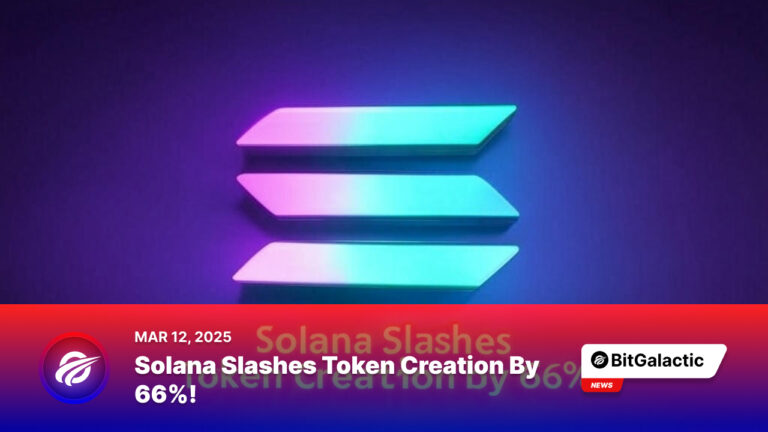Solana Slashes Token Creation by 66%!
Hey, crypto fam! Buckle up, because Solana just dropped a bombshell that could shake up the market. They’re voting to slash new token creation by a massive 66%! Is this a genius move to pump SOL’s price, or a risky gamble that could tank its network? I’m BitGalactic, your crypto guide with 10 years in the game, and today we’re diving deep into this wild twist. Stick around—you won’t want to miss this!
Alright, here’s the scoop. Solana’s community is buzzing about something called SIMD-0228. If it passes—and it’s looking likely—it’ll cut the new SOL tokens handed out to stakers by two-thirds. Plus, they’re planning to shrink emissions by 15% every year until inflation hits a lean 1.5%. Right now, over 25% of staked SOL has voted, and 17% are all in for this change.
Now, why does this matter? At SOL’s current price—$127 as of March 2025—that’s about $3.5 billion in new tokens flooding the market annually with its 4.5% inflation rate. That’s a lot of sell pressure! Supporters, like the folks at Helius, say this flood of tokens keeps dragging SOL’s price down long-term. Cut that supply, and boom—scarcity could drive value up.
But here’s my take after a decade in crypto: it’s not all sunshine. Validators—the people securing Solana’s blockchain—rely on those rewards to stay profitable. Slash them too hard, and some might shut down. Fewer validators mean less decentralization, and that’s a red flag for any blockchain. Look at the market trends—Solana’s staking yield is already hovering around 6-7% in 2025, competitive but not crazy high. Compare that to Ethereum, where staking rewards are also under scrutiny, and you see a pattern: sustainability is the name of the game now.
Let’s rewind a bit. This isn’t the first time a blockchain’s wrestled with tokenomics. Remember Ethereum’s big merge in 2022? It flipped to proof-of-stake and aimed to control inflation, but fast forward to 2025, and Ethereum’s still pumping out more ETH to stakers than users burn in fees. Solana’s trying to avoid that trap early. Back in 2021, SOL’s inflation was closer to 8%, and they’ve been trimming it ever since.
Contrast that with Bitcoin—no inflation worries there, just a hard cap. Solana’s playing a different game, balancing growth with stability. History shows us: get this wrong, and you either flood the market or scare off your network’s backbone. My gut says Solana’s learning from Ethereum’s stumbles, but they’re walking a tightrope.
So, what’s next? If SIMD-0228 passes, I predict SOL could see a short-term price bump—think 10-15%—as traders bet on scarcity. But long-term? It hinges on validator turnout. If too many drop off, we might see network hiccups by 2026. On the flip side, if Solana pulls this off, it could set a blueprint for other blockchains like Cardano or Avalanche.
Here’s my question for you: Do you think cutting emissions is worth the risk, or should Solana keep rewarding its validators more? Drop your thoughts in the comments—I’m reading every single one!
That’s all for today, crypto crew! If you loved this deep dive, smash that like button and hit subscribe to join the BitGalactic fam. We’re here breaking down the wild world of crypto every week—don’t miss out. Ring that bell so you’re first in line for the next big story. See you in the comments—let’s keep the convo going!
Share this post


